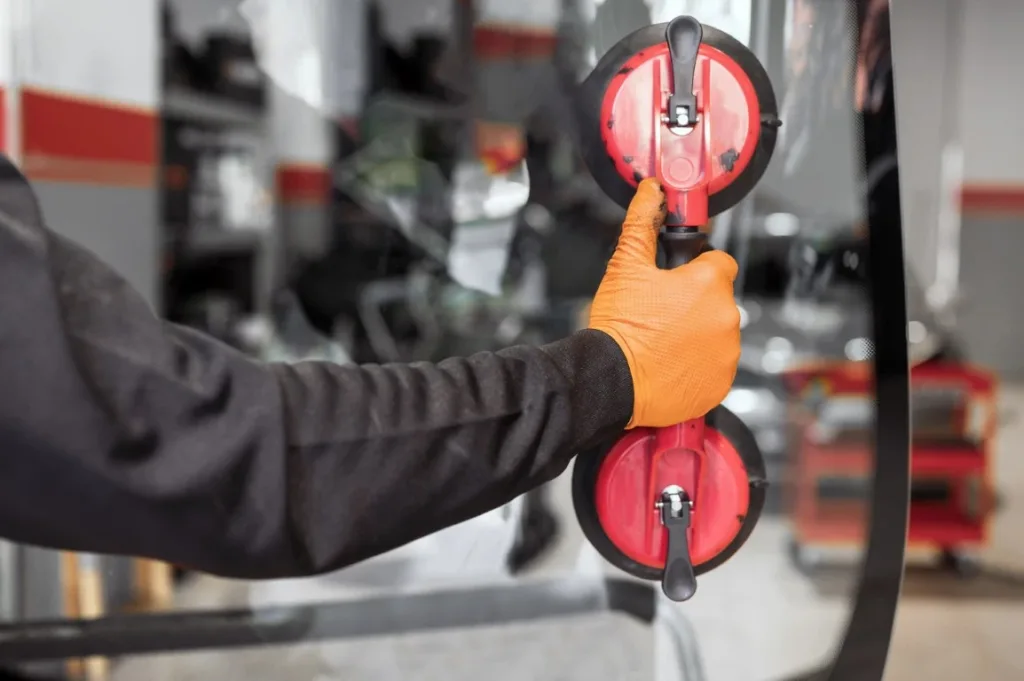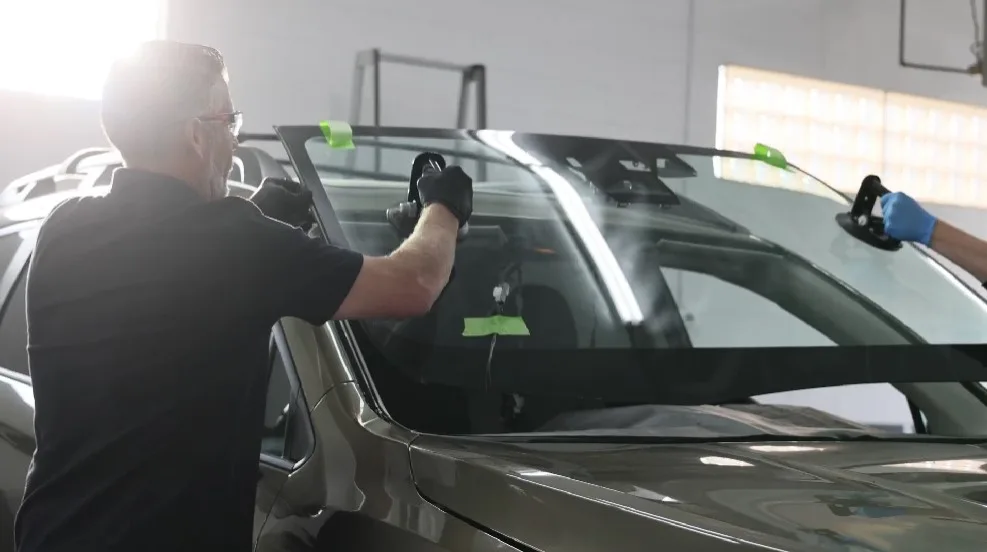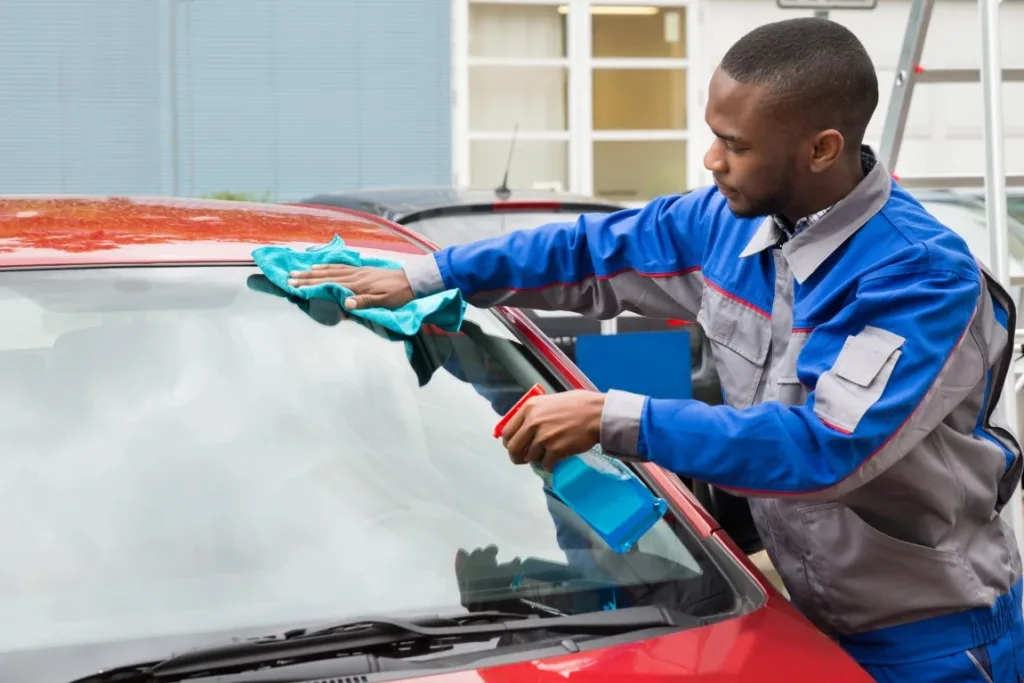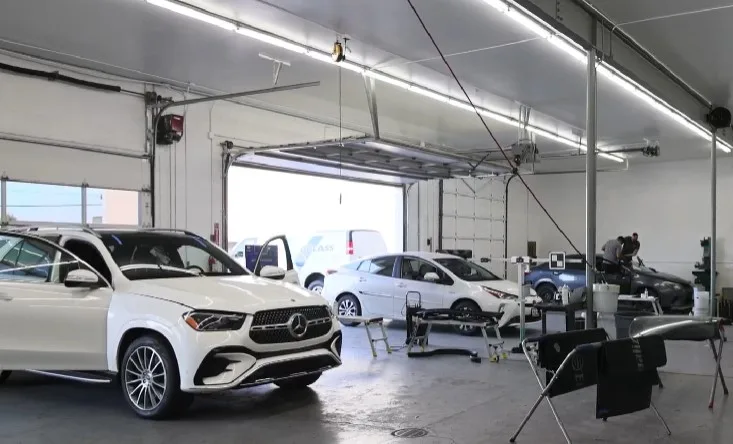
Replacing your damaged windshield is a crucial step in maintaining your vehicle’s safety on the road. Many people worry about how long the replacement process will take, as they don’t want it to interrupt their day-to-day responsibilities. While a standard windshield replacement typically takes one to three hours, there is another important aspect of this process to consider: the curing time.
Allowing adequate curing time, including not removing the tape on your windshield prematurely, is essential for ensuring your new windshield performs properly. But how does the tape on your windshield ensure adequate curing and performance? In this blog, we’ll discuss the importance of leaving tape on your windshield after replacement and when you can remove it and begin fully enjoying your glass replacement.
Why You Should Leave Tape on Your Windshield After a Replacement
After replacement, your auto glass professional will place tape on your windshield. But what does this tape do? While it might not seem like an important part of the replacement process, the tape on your windshield plays a crucial role in ensuring your windshield is held in place while the new adhesive cures.
Without the tape, your windshield may shift when you’re driving, leading to problems down the road. Additionally, the tape on your windshield holds the glass in place against the surrounding seals. Without proper adhesion to these seals, your windshield replacement may look unprofessional and sloppily done.
Finally, the tape on your windshield is used to block moisture, humidity, dust, and debris from accumulating along the seams of your newly installed glass. Even the smallest bits of debris can impact adhesive curing, making it crucial that you refrain from touching the tape on your windshield until you are advised it is safe to do so.

When Can You Remove the Tape From Your Windshield?
Leaving the tape on your windshield for the recommended time will ensure your windshield performs optimally, but when is it safe to remove it? It is often safest to remove the tape from your windshield after 48 to 72 hours of curing. However, the curing time may be impacted by increased moisture levels and humidity in your area.
If you believe inclement weather may impact your curing time, it is always best to speak to your auto glass provider. They will monitor local weather conditions and let you know if it will negatively impact your curing time. When in doubt, it is always best to allow more time for curing than to remove the tape too soon.
The Risks of Improper Curing After a Windshield Replacement
While it may not seem particularly important to allow for proper curing time, this seemingly minor act can have significant consequences. There are a few risks you may face if you prematurely remove the tape on your windshield or don’t allow for adequate curing time, including:

- Compromised Structural Integrity: Your windshield provides up to 60% of your vehicle’s structural support in the event of a rollover. With improper curing, there is a risk that your vehicle’s roof won’t hold up during an accident, putting you and your loved ones at risk of more severe injuries.
- Leaks and Wind Noise: When there isn’t a solid connection between your windshield and the surrounding seals, there is a risk of moisture infiltration in your vehicle, leading to further vehicle damage. Additionally, this may result in whistling wind noises in your car while driving, which can be distracting.
- Increased Risk of Detachment: An improperly attached windshield is at an increased risk of popping out or detaching during an accident or collision. This detachment can compromise the function of your airbags, putting you at risk of more serious injuries during less extreme accidents.
- Voided Warranty: Most manufacturers and installers won’t honor a warranty if the curing instructions aren’t followed. To avoid potentially damaging your new auto glass or incurring costly repairs due to improper curing time, it is best to follow the directions provided by your auto glass provider.
Tips to Ensure Proper Curing
Allowing for adequate curing time is essential for protecting your new auto glass. While leaving the tape on your windshield is an important step in the process, there are a few other things you can do to ensure your windshield can cure properly, including:
- Crack Your Windows: Keeping your windows cracked allows for increased circulation, which aids in the curing process.
- Avoid the Car Wash: The strong pressure of water from a car wash may dislodge your windshield, leading to wind and moisture leaks.
- Gently Close Your Door: Slamming your doors before the windshield has cured can also lead to dislodging, so make sure to shut them gently.
- Monitor for Leaks: After the replacement, be sure to check your windshield for signs of leaks and contact your auto glass professional if any appear.
When it comes to curing your new windshield, it is best not to rush the process. If possible, allow your car and its new glass a few days to cure, which will help avoid complications down the road.

Trust Valley Glass with Your Windshield Replacement
When you’re replacing your damaged windshield, it’s important to work with a team of well-trained and experienced professionals. Choosing the wrong auto glass team can lead to major headaches down the road. If you need to replace your windshield in Northern Utah, Idaho Falls, or Boise, turn to Valley Glass for expert care.
For decades, our team of auto glass professionals has worked diligently to ensure the safety of drivers, wherever they may be going. Whether you need rock chip repairs or your damaged windshield requires replacement, our team handles it all. With our support, you can trust that the glass is built to last.
If you would like to learn more about our auto glass repair and replacement services, don’t hesitate to contact us today.

